^^ Watch the video above for an introduction to this lesson, and what else is coming your way.
Let’s get stuck in…
![]()
We’ve already looked at how many clicks you’ll need each day to hit your revenue goals, how to optimise your books to get the best results, and where to get all those clicks from in the first place.
This is a GREAT step forward – but what if we had a mechanism in place where we had a direct line to all those people who downloaded one of our books, so we didn’t have to start from scratch each day?
What if we had instant access to our audience, so we could launch our new books to the top of the charts? Get hundreds of positive reviews? Drum up extra sales on our back catalogue?
In case you hadn’t guessed already… that’s what your email list is for.
Without an email list, you’re relying on having to generate fresh traffic each and every day. And if you need to scale that up (eg – during a launch) and focus all your clicks during a short time window, you’re pretty much out of luck (unless you have a whopping great advertising budget – but we’ll get to that later).
Another fun fact – during a recent USA Today bestseller campaign, I measured conversion rates between email and advertising traffic, and found clicks from our emails converted almost 5x higher versus paid ads traffic.
Which is hardly surprising – your email list is, at its core, your fan club. And all other things being equal, the author with the biggest “fan club” (eg – email list) gets the most sales during a launch, gets the most reviews, and generally finds marketing a whole lot easier.
“Nick's system helped me more than triple my email list. We hit the top of the charts in several popular genres on the first book in a series with no buzz. I rarely endorse anyone, ever, for much of anything. Consider this an endorsement. That should speak volumes.”
So in today’s session we’re going to look at a simple system you can set up that will help grow your email list (and fan club) and then – even more importantly – what to DO with that email list once you’ve got one.
Let’s jump in…
Once of the most versatile and powerful business assets you can have is an email list. An email list of readers who ACTUALLY LIKE YOU and are waiting for you next release.
Reader Magnets are what bring readers to YOU. They’re an irresistible force that draw readers in – the promise of getting great value content and building a valuable connection.
That’s what it’s all about, after all – making meaningful connections with your audience – building a direct line to your readers. This is what happens when a reader decides to trust you with their email address. And you can make this work using Reader Magnets.
In short, a Reader Magnet is a book (or short story, or “something else”) that you offer to readers in exchange for them joining your email list – which you advertise in the front and the back of all your books.
I see this all the time: “Sign up for new releases here”. “Join me on Facebook here”. “Follow me on Twitter here”.
But that’s missing the point. You need to give readers something of real value. Something more than an email every few months when you release a new book, or a tweet about your latest sale. Or a picture of your cat. You need to give them an irresistible reason to give you their email address. You need to say:
“Get the next book free when you sign up for my mailing list”.
Or
“Get exclusive, never-before-published content when you sign up for my mailing list”.
It’s so simple. Whether you’re self publishing a book or you’ve got a backlist of traditionally published titles, it works. All you need to do is prove to your readers that you can add VALUE.
“Within a few weeks, my fiction fanbase more than tripled – and conversion rates on my non-fiction website improved by over 50%.”
The reality is that people don’t want to join a random newsletter. But if they enjoy your work, they’ll want more of it. So offering them “more” in exchange for joining your email list is a great way of getting those people who love you to keep in touch.
The best Reader Magnets follow these rules of thumb:
Here’s a run-through of how understanding the Amazon algorithm and setting up a simple Reader Magnets system can work wonders:
I won’t go into software options too much here – they each work a little differently, but the overall principles are the same no matter what you use.
And if you’re new to all this, I’d recommend using Mailerlite.
They have a free plan which includes email automation, and if you’re putting together some welcome emails (or something more complicated) they have a very handy graphical user interface that lets you draw out what you want to happen (like a mind-map).
^^ This is more advanced email sequence – if you’re just getting started, all you need is a welcome email to begin with.
There are other free options out there – like Mailchimp – but for ease of use, I always like to recommend Mailerlite. Once you have your email marketing platform set up, all you need to do is:
And that’s it! You can do a LOT more with email, but we’ll get to that later. For the purposes of setting up your Reader Magnet, all you need is a mechanism for someone to join (the signup form) and an automatic email to get sent out with a link to download the book when they do.
From there, you can drop the signup form onto your website and you’re good to go. Let’s take a look at how all that works…
![]()
Here’s where we need to cover a couple of definitions…
Your Home Page is the “front page” of your site, and where the majority of organic traffic is going to arrive at your site (organic = people searching for you). Readers searching for you will expect to be able to find out more about you – which is why your Home Page includes links to your books, your bio, and other juicy details.
Your Landing Page (or Opt-in Page) is where YOU send people – for the sole purpose of getting them onto your email list. And this means it has to be a little bit different…
^^ This is the website page we link to every time we offer our Reader Magnet – inside our books, on our social pages… everywhere. Your Landing Page should include an image of your Reader Magnet (usually a book or short story, or similar), a call to action, and a form readers can fill in to join your email list and get their free gift. Like this:

That’s the whole page. There’s nothing else. No links to your bio, or Twitter page, or anything else to distract from this page’s core purpose. Your Landing Page is a super-optimised page designed to get readers to sign up for your email list. End of story.
Because of this, many Landing Pages can convert up to 80% of visitors into email subscribers – meaning your audience and email list will grow faster (more future sales for you).
Your Landing Page is the link you’ll give readers in the front and back of all your books, at live events, in your advertising, and everywhere else you can. So it’s important you get it right.
Here’s another example from LGBT+ Author Jay Argent:
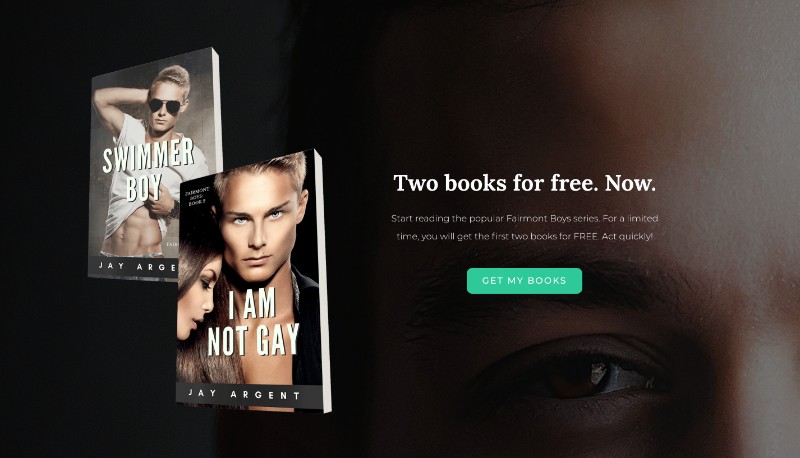
Super simple. Super effective. And there’s another little “hack” we can make for what happens next…
![]()
After a reader joins your email list (from either your Landing Page or somewhere else on your site) you need to give them a confirmation page, or “Thank You” page.
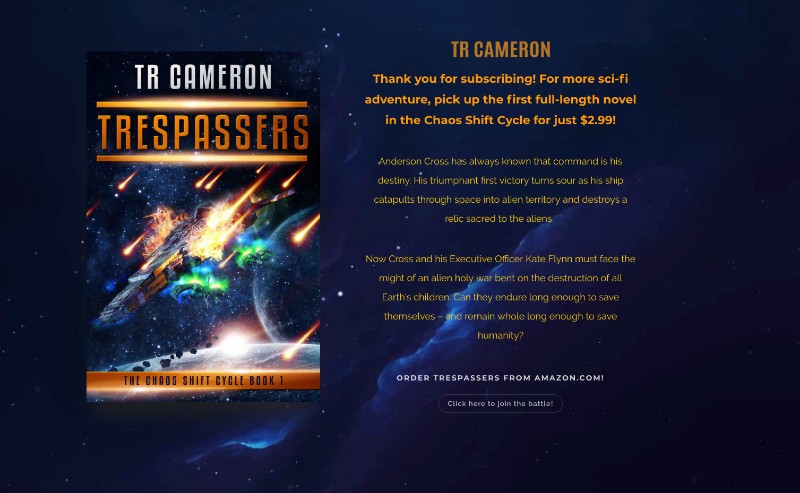
And this is a kind of Landing Page – except it’s a page readers are automatically directed to after signing up that confirms their subscription and it gives them instructions on what to do next.
For many authors, this page is kind of an afterthought… but when done properly, your Thank You page can actually dramatically improve your results in two major ways:
The truth is, if you do nothing, a large proportion of your new subscribers won’t open your first email (the one that delivers your free gift and introduces them to you).
Your job is to maximise the number of readers who open this email, download their free book, and get excited about future emails from you. And your Thank You page is a key part of doing that.
Thankfully, it’s not to difficult. To increase the number of readers opening and engaging with your first email, your Thank You page needs to make it super clear what readers need to do next. Here’s how the page should be laid out:
Headline: Thank You! You’re all signed up.
Copy: Please go and check your email – I’ve sent you an important message with instructions on how to get your free book. Don’t forget to check your junk mail if you can’t find it.
And that’s about it. You can even include instructions on how to “whitelist” your email address, so you don’t get moved to the Junk Folder in the future. Or you can include a special bonus gift if you like. totally up to you. But the key is to give readers blindingly obvious instructions, so they follow through. Like this:
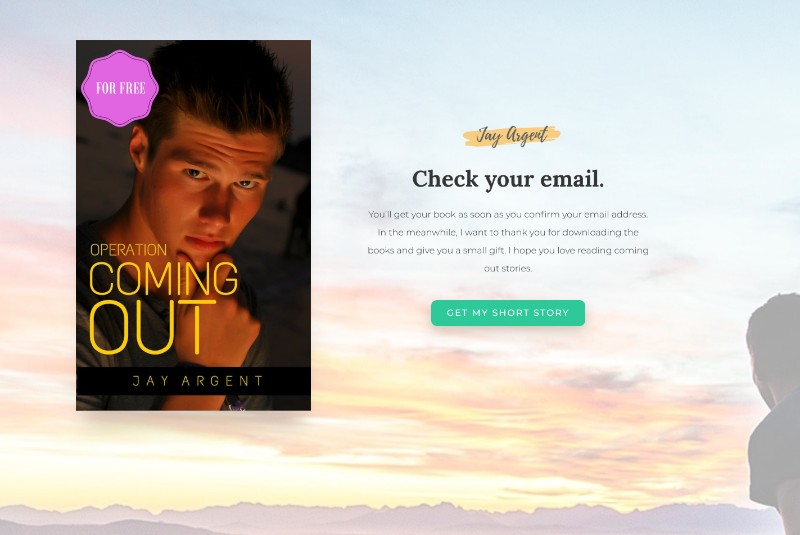
Nothing too crazy, right? But so many authors forget to include simple instructions like this, and it does make a difference (we tested hundreds of thousands of website hits and found roughly a 30% improvement).
You can also use your Thank You page with the “Would you like fries with that?” approach to drive extra sales. Here’s how it works…
Did you know McDonalds makes zero profit from sales of burgers? All the money is in the “other stuff” you buy – like fries, drinks, sides, etc. That’s why all the servers ask “Would you like fries with that?” when you order.

And you know what? It works! In industry-speak this is known as an upsell or cross-sell, and the reason it’s so successful is that customers have already interacted with you positively in the seconds before… meaning they’re highly likely to take you up on your offer.
The same is true with giving away a free gift. When someone signs up for your email list (usually in return for a free book or other gift) they are super receptive to other offers you make at the same time.
And because you’re asking for the sale at the same time as giving away a gift, you’re not interrupting them (imaging a McDonald’s employee calling you up at home the next day and asking “Would you like fries with that?”. Not as effective, right? In fact, it would be downright weird).
So, in short, when you put an offer on your Thank You page – especially a “special deal” like a price discount – you’ll find many readers will take you up on it.
And, to make it even better, it doesn’t even feel like you’re “selling”. Win win!
In fact, after analysing thousands of dollars’ worth of ad spend, we found that including a sale offer on a Thank You page can convert at up to 15% – meaning 15 out of every 100 visitors take you up on it – and in many cases actually paid for the ads in full, without taking into account future sales. Not bad!
Here’s an example of an “upsell” Thank You page:
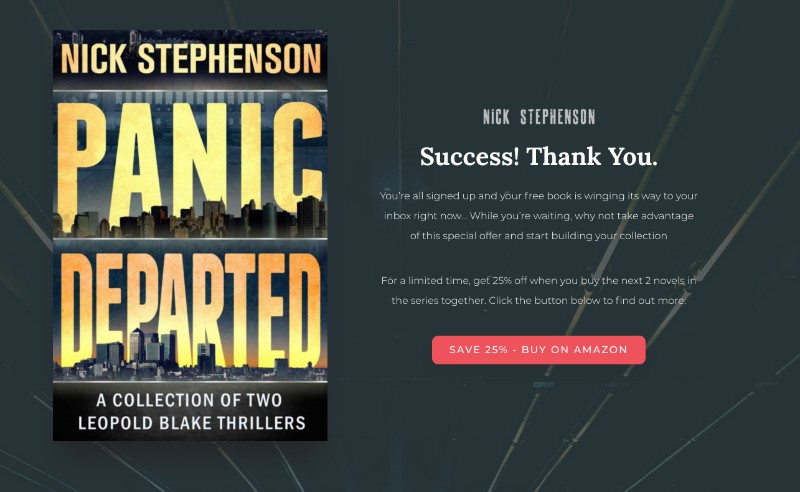
It’s a very similar design to a regular landing page – but instead of asking for a sign-up, it’s offering people 25% off when they order the next 2 books in the series together as a bundle.
Works a charm – and so easy to set up. Now, onto the next page you need…
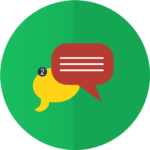
Much of your email list building efforts are going to come from offering a free gift (usually a book) to readers when they sign up to your email list – your Reader Magnet. We’ve covered how to get readers onto your email list, but how do you deliver the book to them?
It’s simple enough to configure your email software (eg: Mailchimp, Aweber, Mailerlite, etc) to send an automated email to readers when they sign up – so all you need to do is link to an ebook file, right?
The problem is, with most readers opting to read books via a reading app or dedicated e-reader (like Kindle), you can’t just send people a link to a PDF.
Sure, that *can* work, but the user experience is terrible. Ideally, you need to send people a fully formatted ebook file (either a .mobi file for Amazon Kindle or .epub file for everyone else).
And that means readers are going to struggle loading up their new ebook properly – as the methods used to get an ebook file onto the right device vary hugely depending on what device or app the reader prefers.
Meaning – if one reader is using a Kindle e-reader, one reader is using an iPhone, and one reader is using a different type of reader like a Nook or even a tablet, then the instructions they need to follow are completely different.
So, when you deliver your free gift you need to make it super easy for readers to (a) collect their ebook file, and (b) actually get it on to their device and start reading.
Meaning, your “book delivery page” needs to contain comprehensive instructions that cover all the eventualities. Here’s an example of how this can look:
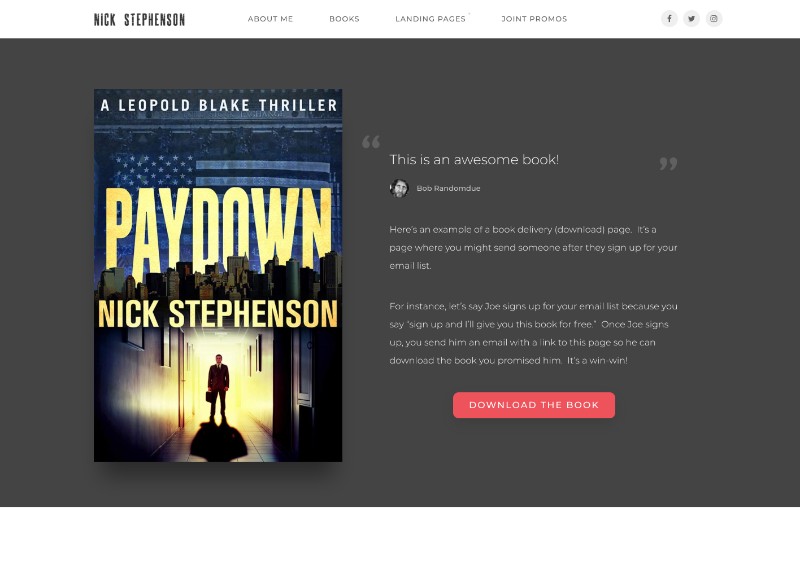
The Book Delivery page looks like a regular book page, but instead of linking to online stores where readers can buy, you link to a “Download The Book” button instead. When readers click the button, this happens:
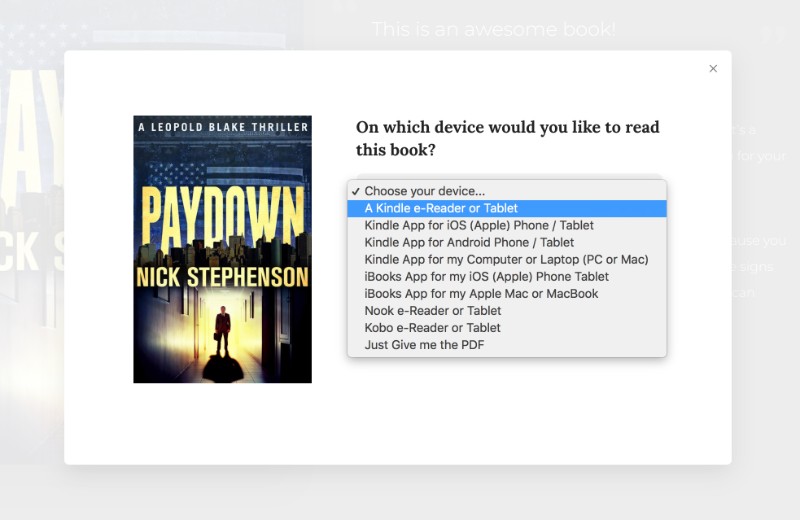
When a reader clicks the download button, a dropdown menu appears where they can select their preferred device. Then, the relevant download instructions are revealed, like this:
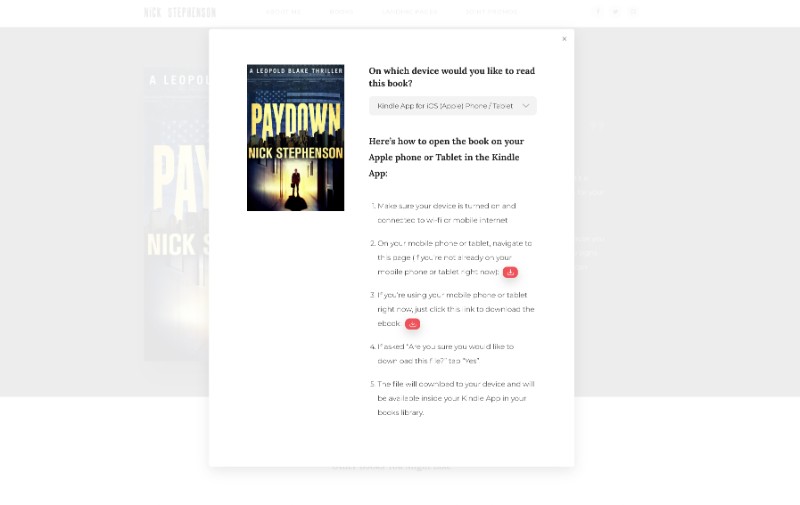
Funky, yes?
Adding this functionality will increase the number of readers who follow through and actually read your book – meaning more happy readers and more potential future customers. At a push, if you can’t get the drop-down boxes and pop-ups like we’ve shown you, you can always just list out the options (but we like our way much better).
Here’s a rundown of some author-website critiques I ran through – I’ll show you how all this looks (and works) in practice:
All it takes is a little work and a little attention to detail. And if you’re not technologically minded and want a simple solution to get started, take a look at Bookfunnel – who can hook you up with a simple landing page, thank-you page, book delivery, and email integration (so your subscribers drop into your email software of choice) without any need for coding.
Your email software (eg Mailerlite) also offers built-in landing pages. So if you don’t want to mess around with your own website, there are plenty of options – so long as you cover all the bases listed out here.
So… we’ve covered how to use Reader Magnets to grow your email list (and how to set up the tech), so what do we DO with that email list once we’ve got one?

 ^^ With any successful launch, you should know EXACTLY where you’re going to end up, long before the first email ever gets sent out (unlike this guy)
^^ With any successful launch, you should know EXACTLY where you’re going to end up, long before the first email ever gets sent out (unlike this guy)
When it’s time to launch a new book (or run a promotion on an older one) our email list is going to be teh #1 source of sales and reviews. So, naturally, the bigger and more engaged your audience is, the better your results will be.
But you don’t need a massive email list to get great results – if you follow the principles I’ll show you in the rest of this lesson, you can often see more than double the results from a few simple adjustments.
In a nutshell – when it’s time to launch (or run a promo) we’re not just going to “blast” out an email telling people the book is ready.
Sure, that can get SOME sales… But if we make an effort to connect with our readers first, and give them a REASON to buy during your launch window, some amazing things happen.
In a nutshell, we’re going to use a launch sequence for our promo emails. Which means splitting your emails into 2 groups:
I’ll take you through all this in a moment. But first, it’s worth covering a couple of supporting points. Specifically:
A big question that keeps coming up….
“My open rates are X% and my click rates are X%. Is this good?”
Or, “Only X% are opening my emails! What am I doing wrong?”
First, let’s clarify a few things.
Your open rates and click rates are NOT the most important thing in the world – not in themselves. Instead, they are ONE measure of how interested your readers are in a given topic at a given time.
Is that open rates and click rates are NOT the goal in themselves. Having a 30% click rate and 75% open rate is great for bragging rights… but what business objective is this hitting? What are the actions you’re driving and are they the right actions?
The “click” is not the goal. It’s the ACTION you want the reader to perform by the time the email or email sequence has finished.
That might be sales, reviews, book downloads, or whatever.
Measure the results based on TOTAL ACTIONS. Then look at your open / click rates to see what might be improved.
This will depend hugely on your audience, but common “fixes” can include:
These are the “rules” that email marketing lives by. Be interesting. Be relevant. Build excitement. Drive the right actions. Keep a “high quality” list. That way, when you come to run your next promotion or launch, your results will be much higher.
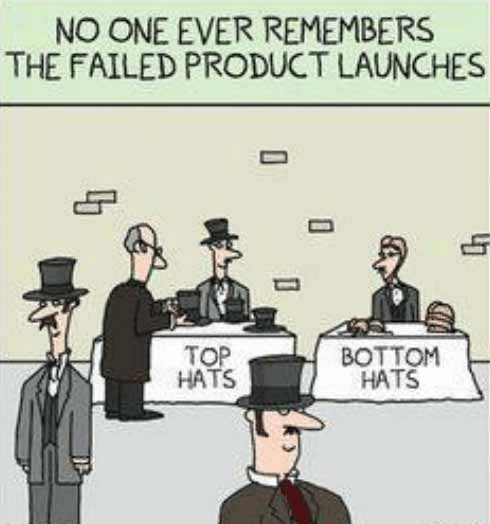 ^^ Wise words. The “Butt Head” Corporation didn’t nail their launch plan.
^^ Wise words. The “Butt Head” Corporation didn’t nail their launch plan.
Every successful launch or promotion includes 2 main stages and 1 optional stage:
The objective, “tone”, and content of your emails during these three phases is going to be slightly different, but they’re all going to follow a standard model:
The principle of AIDA
Attention, Interest, Desire, Action…
In other words, if you can get a reader’s attention, get them interested, stoke desire, and drive action… you’ve got the recipe for record-breaking sales.
Why?
Because every reader has “unconscious barriers” in their mind – stopping them from buying your books. The goal of your launch campaign is to overcome those barriers and get readers excited.
By structuring our launch emails in a specific way, we can work through each of these barriers without readers even knowing they exist.
End result? More sales, less stress, happier readers:
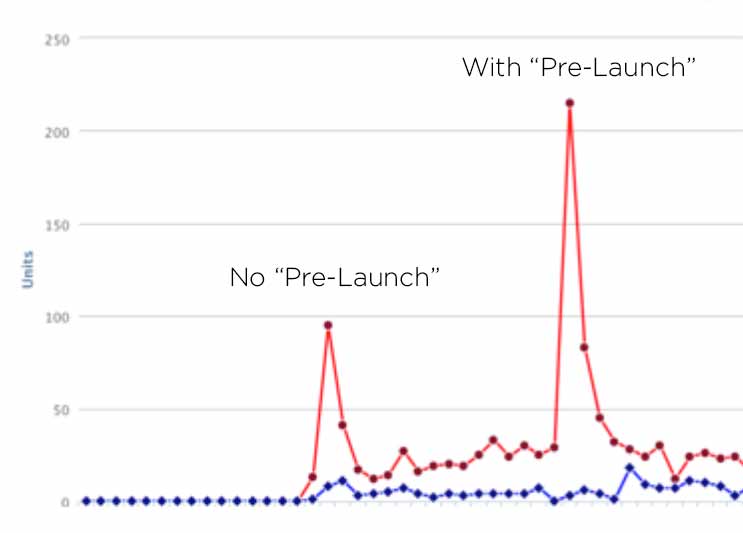 ^^ the peak on the left had no pre-launch series. The peak on the right did. You can see the difference.
^^ the peak on the left had no pre-launch series. The peak on the right did. You can see the difference.
Usually, I recommend setting aside 1 week for each phase of the launch – pre-launch, launch, and post-launch (if you want to do one – it’s optional) – 3 weeks in total. You can go longer if you like.
The number of emails you’ll want to send during this time will depend on your audience, but as a minimum, I’d recommend:
These emails might be spread out over 3 weeks, 4 weeks, or longer. And remember, during this launch period your goal is to overcome those “barriers to sale”.

Notice how different parts of AIDA are referenced at each stage? During the prelaunch, we’re focusing on Attention, Interest, and Desire. Then, during launch, it’s all about Attention and Action.
Or, in other words, we build up the excitement and anticipation to drive as many actions (sales) as possible on launch day through to the end of the launch week.
Note: a lot of you will be thinking: “Seriously, I need to email people three times a week? Won’t they get sick of me and unsubscribe?”
Let me show you something:
(In the example above, I showed you a sequence where readers got a welcome email, a follow-up email, then one last email a week later. The unsubscribe rate was 0.7%. The other sequence sent out an email every day for 16 days. The unsubscribe rate was 0.1%. Frequency is something to bear in mind for your audience – but it’s NOT the main reason for unsubscribers!)
The upshot is – yes, you’ll get unsubscribers. BUT, your overall percentage-per-email shouldn’t change by much. In other words, if you get a 0.5% unsubscribe rate for each email normally, you should expect the same numbers during a launch.
The main thing for you to worry about is leading those readers on the right journey towards the sale, and focusing on delivering the right value to the right people.

Now it’s time to “fill in the gaps” with writing the right content to overcome those four barriers to sale, and move through each phase of AIDA as we near launch day.
Here’s how to overcome those barriers:
Ever get an email from a company and wonder how the heck you got on their mailing list in the first place? Or why they could possible think what they do is relevant to you in any way? Yeah, me too. Avoid this at all costs.
Overcoming this first barrier is an opportunity to remind your readers why they’re on your email list in the first place. Perhaps they downloaded one of your books. Perhaps they opted in another way. Whichever route, now’s the time to remind people how great your books are and why THEY will enjoy them.
If you’ve ever wondered why publishers stick “If you liked [FAMOUS AUTHOR] you’ll love [NOT FAMOUS AUTHOR]” or “Sensational! [NOT FAMOUS AUTHOR] is the new [FAMOUS AUTHOR]” blurbs on everything? Well, this is why. Now it’s your turn to do it in a less crappy way.
![]()
You might have the best book in the world, but if it looks like garbage nobody’s going to buy it. Hopefully, you’ve invested in some good cover designs and you’ve got some great reviews on your previous books (or will soon). Now’s the opportunity to pimp out your accomplishments and build up those “trust markers”. Don’t lose sales because readers think you’re not up to scratch.
A plague of the non-fiction world especially, this is often known as “special snowflake syndrome” and I can guarantee you that if you write “how-to” books, you’ll have some people on your list who will find any reason it might not work for them.
“Okay, you’re teaching digital marketing for Youtubers. But I’m left handed and like grapefruit juice. Will this work for me?“
An extreme example, perhaps. But joking aside – people WILL find reasons to worry that, for some reason, they aren’t a good fit for what you’ve got.
Ever watch a late-night infomercial? Or watch The Shopping Channel? Every time I catch them, I can’t tear my eyes away. It’s fascinating.
And a major reason these guys SELL is they feature countless testimonials, case studies, and user reviews from people in a wide range of circumstances. Men, women, old, young, rich, poor, average, attractive, unattractive, fat, thin, whatever.
In other words, they try to stamp out “special snowflake syndrome” at every opportunity.
It’s less of a concern for fiction, but if you write in a super-specific niche it’s always worth reinforcing how you serve your core readership – give people a reason to KNOW your book is going to be awesome for THEM.
This is where case studies, testimonials, reviews from different demographics, and samples / previews can be very powerful.
![]()
The killer of all online sales. When something is available so easily and quickly (like ebooks) it’s common for readers to “do it later”.
Which, of course, means they never will.
So, it’s your job to give people a compelling reason to buy NOW.
Including special launch-day bonuses or limited-time price reductions (like Bookbub does) work wonders here. You can do either, or both, as you see fit. So long as the offer both adds value and is for a limited time, you can nip procrastination in the bud.
For example: “If you buy my new book before midnight on Sunday, you’ll save 50% and get a free bundle of short stories” << don’t have bonus content? Team up with other authors and put together a Reader Magnet of short work people can download
By offering something of value, with a deadline, you can smash through the procrastination barrier and see amazing results.

Let’s break it down.
We’ve got a structure and AIDA plan for our launch. Now we need the “big idea” or the “theme” to tie everything together.
Why do we need a theme? To make your emails interesting, relevant, and so that readers actually, you know, read them.
(Instead of what most authors do – jam in as many sales messages as possible and then wonder why nobody buys).
This story – or “theme” – should weave through all your emails, providing a common theme and creating a desire in your readers to “find out more” at the end of each communication from you.
Want more depth on that? Check out this video with André Chaperon:
The short version: come up with a relevant theme (or story arc) for your emails that develops towards a climax as the emails progress – leaving the reader “wanting more” at the end of each email.
(Hey, if you can do this with books, you can do this with emails – it’s a lot less complicated)
Let’s take an example:
![]()
Julie writes historical romance, and her new book – the start of a new series – is set exclusively in Elizabethan England, in the court of Queen Elizabeth herself, during the late 1500s.
Julie has included lots of historical events in her book, including assassination attempts on the queen, violent rebellions, executions, and the attempted invasion of England by the Spanish Armada.
Knowing she needs an overall “theme”, Julie takes elements of her book and frames it as a question to her readers: “How would your relationship survive assassination attempts, murder, and foreign invasion?”
This theme runs through Julie’s email series – posing the question, while giving real-life (or made-up) historical examples of people living through those dangerous times – culminating in either a “happily-ever-after” ending by the end, or something less optimistic…
In other words, she’s using elements of what her book is already about to craft story “snippets” to weave through her email series. Like this:
![]()
Email 1 – “Attention” – Pose the question “would your relationship survive?” in the setting of the book’s historical context. Tease the upcoming release and some bonuses, promise to share some real-life examples and a cover reveal.
Email 2 – “Attention and Interest” – Share one historical example of “lovers in jeopardy”. Reveal cover. Tease more info on characters and historically accurate plot. Reveal launch-day bonuses.
Email 3 – “Interest and Desire” – Share another historical example. Detail what research has gone into the book. Introduce main hero / heroine and main antagonist, conflict, and stakes. Show snippets of reviews for previous books and any early beta-reader feedback. Link to chapter 1 preview. In PS, remind readers of the launch bonuses and deadline.
Email 4 – “Desire and Action” – Announce book is live. Re-cap on bonuses. Strong call-to-action. Underneath call to action remind readers of strong reviews. Hint at another “lovers in jeopardy” story, but this time with a happy / not happy ending.
Email 5 – Desire and Action” – Tell the story teased in previous email. Ideally this story should be different to the others (eg, not a happy ending, or a famous story everyone gets wrong). Link to characters in the new book. Remind of strong reviews. Another reminder of bonuses and strong call to action.
Email 6 – “Action” – briefly remind readers WHY you’re telling them these stories (eg – “these people refused to miss their chance”) and tie into the launch bonus deadline closing in a few hours. Strong call to action, even include an animated countdown timer if appropriate.
Email 7 – [The Optional Post-Launch Email] “Attention and Action” – follow up after the launch and ask readers if they enjoyed the stories, and to provide any feedback on the content they’d like to get going forward (eg – using a survey). Use the data to clean your list and plan your next campaigns.
![]()
This is just an example of a “launch plan” or “promotion plan”. While the specific details will vary depending on your genre or audience, the overall objectives and structure remains the same. The “story” we weave through the launch (“lovers in jeopardy”) is what ties everything together and provides the value outside of the launch (eg – if you take out all the “sales” parts, the remaining email is still entertaining / inspirational / educational).
And there is a specific incentive to encourage people to buy NOW, rather than waiting until later (and then they never do).
If anything, writing fiction makes it easier to come up with your “big idea” – or your narrative arc.
But it’s the same with non-fiction too. What are the main problems your book is trying to solve? Choose one or two examples and give your readers some help.
For example, if your non-fiction book is all about “building a house”, you could craft your launch emails around “planning and legal requirements” (and maybe include some stories of “the world’s craziest houses that got planning permission”) or “how to find the best contractors” (and include similar amusing / interesting stories).
The key thing is to tie your “theme” into your books and provide readers with something interesting to read. Then, as the launch campaign progresses, release tidbits of information about the upcoming promotion (cover reveal, sample chapter, bonuses, etc).
It’s a simple story. But it’s a “big idea”.
Your launch series can be planned out well in advance – so when it’s time to “sit down and write” you already know exactly what you’re going to say.
The emails are then queued up in your email software, and you’re ready to launch.

Once you’ve written the emails and run the campaign, you can use these “old” emails to create templates to use again and again with NEW subscribers.
So, instead of coming up with new ideas and drafting out emails every single day, take your best-performing ones and use them in automated sequences. You can run “launches” or “promotions” for your books 24/7, exposing the right books to the right people at the right time.
Now, we’ve covered a LOT in today’s lesson. And remember, you shouldn’t try to do ALL these things at once and you can refer back to things as you need to.
I’ll also be releasing an invitation to join me in an on-demand workshop soon, where we’ll cover everything we’ve touched on so far in more detail. So keep your eyes open for that.
In the meantime, check out this lesson’s summary and action items below – and drop me a line in the comments if you have questions!
Just getting started? Don’t worry. Take it one step at a time – once the “set up” is done, you don’t have to fiddle with it again! In the meantime, leave a comment below if you have questions: